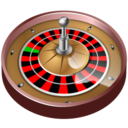Understanding the Concept of Rhythm Shift
Most casino players focus on betting size, patterns, or mathematical systems. However, one overlooked element is tempo — the rhythm at which you place bets, change tables, or engage in a game. The Rhythm Shift Strategy is based on adapting your play tempo to avoid predictability and to optimize decision-making when energy, focus, and bankroll fluctuate.
Why Tempo Matters in Casino Games
Tempo in gambling is more than speed; it reflects psychological readiness, concentration, and bankroll control. Many players lose money not because of bad strategy, but because they play too quickly when they should slow down, or hesitate when momentum is in their favor.
- Fast Tempo Risks: Emotional betting, poor bankroll management, higher susceptibility to house edge.
- Slow Tempo Risks: Missed opportunities, fatigue-based mistakes, lower excitement levels.
Balancing these two modes creates flexibility and adaptability.
Applying the Rhythm Shift in Roulette
In roulette, the Rhythm Shift Strategy involves alternating between observation phases and active betting phases.
- Observation Phase (Slow Tempo): Watch 5–7 spins without betting. Track recent outcomes (colors, odd/even, dozens).
- Active Betting Phase (Fast Tempo): Bet for 3–4 spins with small, structured bets (e.g., covering two dozens or a column + color). Increase tempo to ride streaks.
- Reset Phase: Return to observation if losses exceed 2 units or if table rhythm shifts.
This approach prevents overexposure and ensures mental clarity.
Applying the Rhythm Shift in Blackjack
Blackjack players often fall into predictable betting sequences. Rhythm Shift introduces variability:
- Slow Tempo Mode: Bet the table minimum, focus on card counting or tracking deck penetration. Conserve bankroll.
- Fast Tempo Mode: When favorable counts appear or dealer trends emerge, slightly increase bet size for a few hands, then scale back.
- Micro-Breaks: Take short pauses to disrupt psychological patterns and avoid tilt.
This strategy emphasizes timing over size, making it less detectable than classic progression systems.
Rhythm Shift in Slot Machines
Slots rely on RNG, yet tempo can still be applied:
- Controlled Spins: Spin slowly, observe paytable dynamics, bonus triggers, and volatility.
- Quick Burst Play: Execute 15–20 spins rapidly when entering a fresh session or after a bonus round.
- Exit Rule: If no significant feature hits within 50 spins, shift tempo again or leave the machine.
By alternating rhythm, you prevent mechanical autopilot play, which is a major cause of bankroll drains in slots.
Practical Tips for Implementing Rhythm Shift
- Set Session Timers: Use a phone timer to alternate between fast and slow modes every 15–20 minutes.
- Bankroll Division: Split your budget into tempo phases (e.g., 60% for slow play, 40% for active bursts).
- Mindfulness Reset: Stand up, stretch, or drink water between rhythm shifts to maintain focus.
Advantages of the Strategy
- Reduces predictability and emotional autopilot.
- Enhances focus by forcing conscious rhythm changes.
- Provides natural stop-points to reassess bankroll and table conditions.
- Adaptable across roulette, blackjack, slots, and even poker tournaments.
Key Considerations
The Rhythm Shift Strategy is not a guaranteed winning system; rather, it is a discipline tool. It helps players:
- Manage energy and bankroll.
- Avoid overconfidence during winning streaks.
- Prevent chasing losses during emotional play.
Used correctly, it maximizes entertainment value while improving decision quality.
